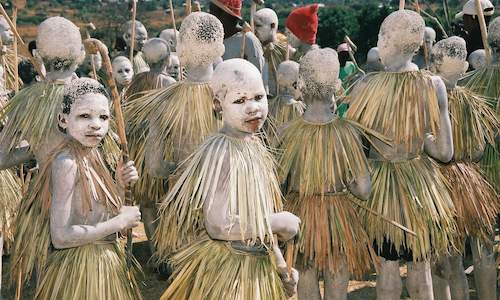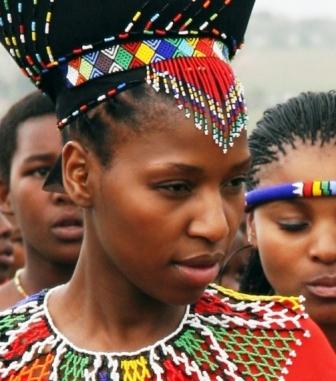The Greatest Guide To South African Culture Today
The Greatest Guide To South African Culture Today
Blog Article
The 4-Minute Rule for South African Culture Today
Table of ContentsAll About South African Culture TodayEverything about South African Culture TodayThe Definitive Guide to South African Culture TodayAll about South African Culture Today10 Easy Facts About South African Culture Today ExplainedExcitement About South African Culture Today
A matter of importance in Zambian villages is the passing away of liked ones. All participants of the town placed cash, time and initiative together for the funeral of the deceased.Songs and dancing is an extremely crucial facet of the Zambian culture. The numerous tribal devices have their very own dancing forms; nevertheless, makishi is usual amongst all people.
The smart Trick of South African Culture Today That Nobody is Discussing
When it comes to songs, drums are made use of the most, with a range of drumming ceremonies. In Zambia, bulk of individuals are Christian; Protestant and Roman Catholic. There are small groups of Muslims and Hindus, with the remainder adhering to regional native tribal ideas.

South African heritage and culture is greatly varied, and includes various groups of people that each have their own customs and ideas. Having such a variety of people and societies is what makes South Africa so one-of-a-kind. In truth sense of the expression, we are a rainbow nation.
South Africa has approximately 3 hundred thousand Portuguese people living in it. Making it the 7th on the list of countries with the most Portuguese people in it outside of Portugal. Portuguese is not just a culture, but it is likewise a language and a citizenship. Portuguese individuals stem from the country of Portugal in Europe, nonetheless, due to Portugal (like several other countries in Europe) discovering the globe and dominating various other nations during the 15th 20th centuries, South Africa has what we call Portuguese South African's living in it.
The Basic Principles Of South African Culture Today
Among the noticeable features of the topography is a plateau that covers virtually 2 thirds of the center of the country. The plateau facility rises toward the southeast, where it climaxes in the Drakensberg array, part of an escarpment that separates the plateau from the coastal areas. The Drakensburg consists of Sparkling wine Castle, the highest peak in the country.
The region north of the Witwatersrand, called the bushveld, slopes downward from east to west towards the Limpopo River, which develops the global boundary. The western area of the plateau, the middleveld, additionally comes down in the direction of the west and varies in elevation between the highveld and bushveld. Between the Drakensburg and the eastern and southern coastline, the land descends to the sea.
Nearer the coastline there is a low-lying plain called the eastern lowveld. Southwest of the plateau the country ends up being gradually a lot more dry, offering way to the stony desert of the Great Karroo, verged on the east by the lower, better watered plateau of the Little Karroo. Separating the completely dry southern inside from the sandy coastal of the southern coastline and West Cape is one more variety, the Langeberg.
Top Guidelines Of South African Culture Today
The country's racially, ethnically, and politically split history has produced national and subnational icons that still work as symbols of the country, and others icons that are accepted only by certain teams. The monoliths to white inhabitant conquest and political prominence, such as Learn More the Afrikaner Voortrekker ("pioneer") Monolith in Pretoria and the Rhodes Monument honoring the British colonial realm home builder and Cape prime priest Cecil Rhodes, remain sectarian icons.
The initial modern citizens were the San ("bushman") hunter-gatherers and the Khoi ("Hottentot") peoples, who rounded up animals (South African culture today). The San may have existed for hundreds of years and left proof of their presence in countless ancient cavern paintings ("rock art"). Bantu-speaking clans that were the forefathers of the Nguni (today's amaZulu, amaXhosa, amaSwazi, and vaTsonga peoples) and Tswana-Sotho language groups (today's Batswana and Southern and Northern Basotho) migrated down from eastern Africa as very early as the fifteenth century

Both previous republics of the Orange Free State and Transvaal (South African Republic) were developed by Afrikaner settlers who beat and dispossessed the Basotho and Batswana. Lesotho would have been forcibly included into the Orange Free State without the expansion of British defense in 1869. The best marriage of the nation arised from the South African Battle (18991902) between the British and both Afrikaner republics, which decreased the nation to destroy at the beginning of the twentieth century.
Afrikaners historically considered themselves the only real South Africans and, while giving full citizenship to all locals of European descent, denied that standing to individuals of shade up until the democratic shift of 1994. British South Africans preserve a feeling of cultural Our site and social connection to Great Britain without deteriorating their identity as South Africans.
Getting My South African Culture Today To Work
The diversity and fragmentation within ethnic groupings and the balance of stress between those groups during the twentieth century avoided interethnic civil dispute. While intergroup tensions over resources, entitlements, and political prominence stay, those conflicts are as most likely to pit Zulu versus Zulu as Zulu versus Xhosa or African versus Afrikaner.
From colonial India, British vendors and administrators brought the bent metal ornamental roofing systems and slim lace job columns that still symbolize the terraces of cottages in the areas and cities throughout the nation. Holy places add a crucial architectural element even in the tiniest towns. Along with the rising steeples and timeless stonework of Afrikaans Dutch Reformed churches, Anglican churches, synagogues, mosques, and Hindu temples supply variety to the religious architectural scene.

Slaughtering and the developing of typical cereal beer are important in safeguarding the engagement and a good reputation of the ancestors who are considered the guardians of good lot of money, success, and wellness. Indian areas preserve their indigenous culinary customs and use them on Islamic and Hindu ritual and ceremonial occasions. Afrikaners and Coloured people collect at weekend breaks and unique events at multifamily about his barbeques called braais, where community bonds are enhanced.
Since this was the main financial business of both black Africans and white colonists, dispute in between those groups fixated the possession of grazing land and animals. In 1867, the biggest diamond down payments worldwide were found at Kimberley in the west main location. The riches from those fields helped fund the exploitation of the best gold coral reef in the globe, which was uncovered on the Witwatersrand in 1886.
Fascination About South African Culture Today
This led to misconceptions and intentional misrepresentation in the ventures of white settlers and federal government officials with African principals during the early american period (South African culture today). In the facility of African books, some aspects of common and chiefly "tribal trust" land tenure were preserved, and even in white country areas, forms of public tenure were still exercised in areas with African neighborhoods
After the democratic makeover of 1994, programs for land restitution, redistribution, and reform were set up, but progression has been slow-moving. The white minority still manages eighty percent of the land. Following agricultural land invasions in Zimbabwe, the Division of Land Affairs has actually pledged to speed up land redistribution.
Report this page